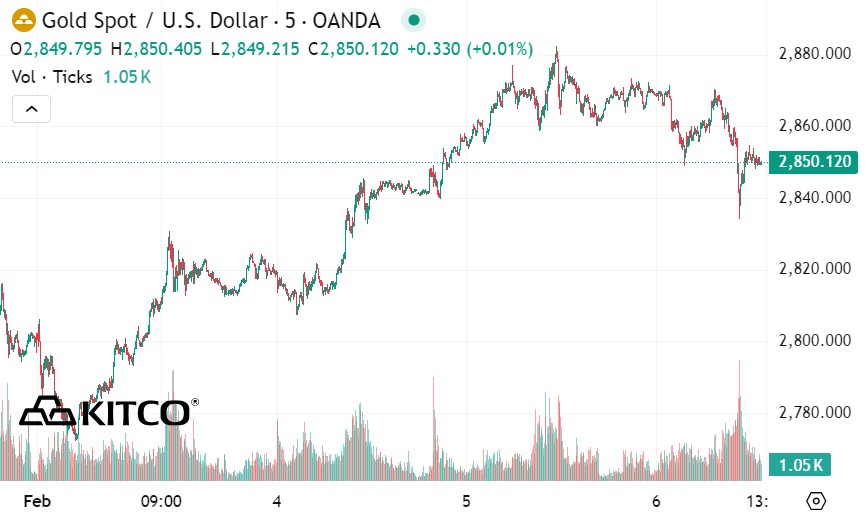Positive outlook
In a forecast sent to the London Bullion Market Association (LBMA), Bernard Dahdah - precious metals analyst at Natixis - said that central bank demand and renewed investor interest will continue to push gold prices higher in 2025.
“Central bank demand will remain near 2024 levels, with the de-dollar trend continuing in countries that are not friendly to the West (mainly due to concerns about freezing Russian assets following the conflict in Ukraine). We also see a return of capital from Western investors, helping to keep flows into physical gold ETFs positive,” he said.
Looking further into the supply-demand dynamics of the gold market, Dahdah is quite optimistic about the precious metal, predicting that prices will exceed $3,200/ounce and average around $2,725/ounce this year.
Concerns about the bullion market are exaggerated
According to Kitco, unprecedented amounts of precious metals have poured into US vaults from London and elsewhere around the world. At the same time, there are growing concerns that London may not have enough gold to meet demand in the over-the-counter (OTC) market, as wait times for physical gold delivery have stretched from a few days to four weeks. However, one market analyst believes concerns about the bullion market are overblown.
In a report published Thursday, Bernard Dahdah said the inflow of gold into New York vaults makes sense if investors are worried about tariffs. However, he said the Trump administration is unlikely to implement its tax policies.

US President Donald Trump, after repeatedly pressuring Mexico and Canada, has delayed imposing tariffs on the two countries for 30 days.
“In theory, moving gold from London to COMEX makes sense if the costs (including financing, shipping, insurance, etc.) remain lower than the nominal impact of the new tariffs,” he said.
Dahdah noted that the spread in the swap forward (EFP) market has reached $60 an ounce, well above the historical average of $1 an ounce. Some market players have begun to question the move as shipping costs continue to rise.
Dahdah said the inventory move could be a costly mistake for some players in the bullion market.

“First, unless the US imposes tariffs on all imports or gold from every country, the metal will still find its way into the US duty-free. Unlike other commodities, gold can be shipped quickly (by plane) at very low cost.
Second, imposing tariffs on gold imports would be unpopular with supporters of the US president. For the investment community or gold enthusiasts, this would be tantamount to imposing a tax on any investment transaction," he said in the report.
Dahdah also noted that concerns about physical gold holdings in London are overblown. Although U.S. gold holdings rose 433 tonnes to 1,034 tonnes, the London market still held 8,686 tonnes at the end of December.











